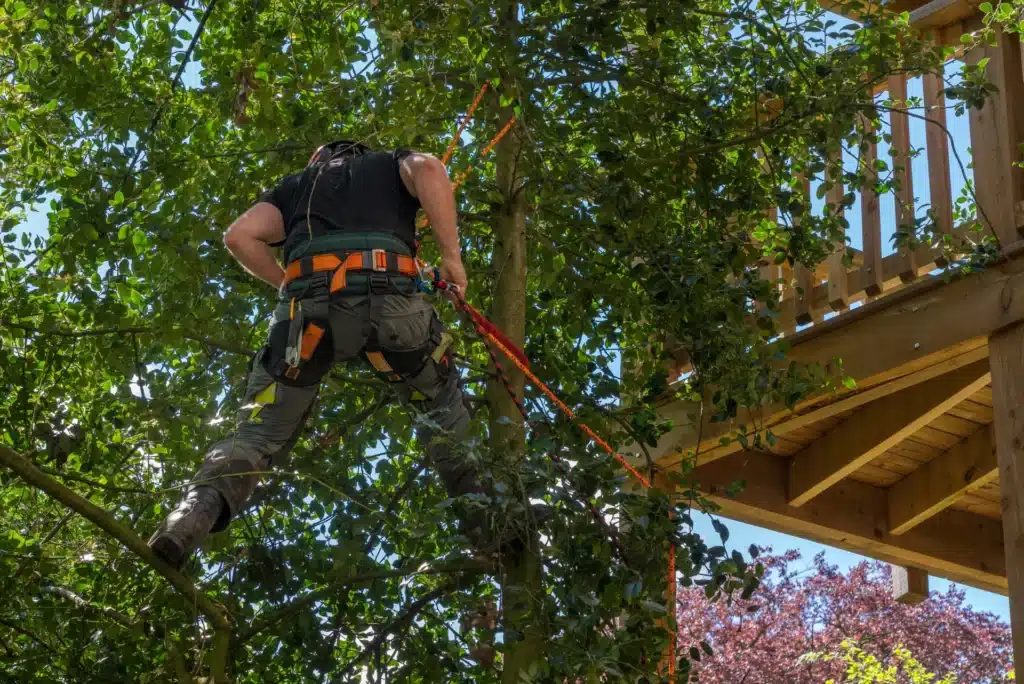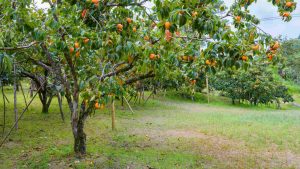Trim a Japanese magnolia tree is an essential technique for preserving its health, attractiveness, and structural integrity. This tree is prized for its decorative value and beautiful flowers, but it requires careful and timely trimming to thrive. This article offers a complete reference on the art of cutting Japanese magnolia trees. From studying the tree’s qualities to providing professional advice on precise pruning procedures, embark on this instructive trip to discover how to retain the beauty and health of your Japanese magnolia.
Importance of Trimming japanese magnolia tree
Trimming is critical in the maintenance of Japanese magnolia plants. Pruning these trees is not just an aesthetic undertaking, but it is also an important step in their general health. Trimming on a regular basis promotes healthy development while keeping an ideal structure that promotes improved airflow and sunshine penetration. This mechanism helps to minimize branch overpopulation and ensures that the tree’s energy is spent into thriving rather than supporting weak or damaged areas. Furthermore, good pruning aids in the elimination of dead, diseased, or crossed branches, reducing the danger of infection or insect infestation. Aside from aesthetics, correct pruning increases the tree’s resistance to environmental stresses, assuring its life and longevity in your garden setting.
Types of Japanese Magnolias
Saucer Magnolia (Magnolia x soulangeana): Saucer Magnolia blooms in pink, purple, or white and is known for its huge, saucer-shaped flowers. This cultivar is one of the most popular in landscaping.
Magnolia stellata: Star Magnolia has star-shaped, fragrant blossoms with delicate petals in white or pale pink. It is prized for its early blossoming.
Kobus Magnolia (Magnolia kobus): Known for its magnificent white flowers with a pinkish hue at the base, the Kobus Magnolia blooms before its leaves appears, producing a dramatic visual spectacle.
Loebner Magnolia (Magnolia x loebneri): This hybrid species has flowers varying in color from white to light pink. It is praised for its beautiful shape and profusion of blossoms.
Magnolia sieboldii (Oyama Magnolia): Oyama Magnolia stands out for its attractive, fragrant blooms and glossy leaves, with delicate, cup-shaped flowers in white or pale pink.
The Best Time to Trim japanese magnolia
Determining the best time to prune a Japanese magnolia tree is critical to its health and growth. Pruning Japanese magnolias is usually best done after they have finished flowering. Trim the tree in the late spring or early summer, ideally between late May and early June, after it has finished blooming. This timing permits the tree to preserve energy spent on flowering, allowing it to focus on new growth during the upcoming season.Pruning Japanese magnolias in late summer or fall may result in the removal of prospective flower buds for the following blooming cycle. Similarly, cutting in the winter or early spring might disrupt the tree’s natural development cycle and perhaps lower its size.By trimming at the right time, you may improve the tree’s health, avoid disruptions to its blooming cycle, and encourage vigorous development for a bright show of blooms the following year.
Tools required
Pruning Shears: Ideal for cutting small branches and twigs up to ¾ inch in diameter.
Loppers: Designed for thicker branches, typically 1 to 2 inches in diameter, loppers offer greater leverage for cutting.
Pruning Saw: A sharp pruning saw aids in cutting thicker branches that pruning shears or loppers cannot handle.
Pole Pruners: These extendable tools assist in reaching higher branches without the need for a ladder.
Gloves and Safety Gear: Protect your hands with sturdy gloves and wear safety goggles for eye protection.
Pruning Sealant (Optional): While not mandatory, a pruning sealant can be applied to larger cuts to promote healing.
How to trim a japanese magnolia tree
Step by step guide on trimming japanese magnolia tree
To begin, assess the tree’s general health. Identify and remove any dead, diseased, or crossed branches.
Gather your pruning tools and make sure they’re clean, sharp, and in good operating order.
Trim the tree after its blooming cycle, which is normally in late spring or early summer, to prevent disturbing the blossoming process.
Begin by eliminating dead or unhealthy branches. Then, deal with crossing branches to improve the tree’s structure.
Make use of suitable pruning strategies. Make clean incisions slightly outside the branch collar to facilitate healing.
A pruning saw should be used for bigger branches. To protect the tree, cut at a modest slant.
Keep the tree’s natural form while removing any overgrowth that may interfere with its attractiveness.
Pruning should be done sparingly. To reduce stress, remove no more than 25% of the tree’s living leaves.
Avoid over-pruning. To avoid stress, just remove 25% of the tree’s living leaves.
Take a step back from time to time to inspect the tree’s beauty and symmetry.
Remove debris and consider applying a pruning sealant on larger cuts to assist in healing.
By following these steps carefully and ensuring cautious and selective pruning, you can effectively trim your Japanese magnolia tree, promoting its health and aesthetic appeal.
- Can you trim a magnolia tree?
- Can you trimming the bottom of a magnolia tree?
- Best Time to Trim Magnolia Tree Branches
Pruning Young Japanese Magnolia
Pruning young Japanese magnolia trees demands precision in order to develop a strong, well-shaped structure. Begin by removing any dead, damaged, or crossed branches, with the tree’s health and balanced development as your first priority. To build a strong foundation, encourage a central leader (main upright stem) and equally spaced lateral branches. Excessive pruning should be avoided since young trees are more sensitive and might be stressed by it. Furthermore, avoid removing more than a quarter of the tree’s leaves to avoid slowing development. Monitor the tree’s growth on a regular basis and modify trimming as needed to maintain a healthy and nicely shaped young Japanese magnolia tree that will thrive in your garden setting.
Pruning Mature Trees
Pruning mature Japanese magnolia trees demands a planned strategy to preserve their health and improve their look. Begin by removing dead, diseased, or overloaded branches to optimize ventilation and sunlight penetration inside the tree canopy. Examine the tree’s structure carefully, intending to keep its original shape while removing any crossing or rubbing branches. To promote healing, use careful pruning techniques, making clean cuts slightly beyond the branch collar. To reduce bloom loss the next year, avoid severe trimming throughout the growth season. Regularly evaluate and trim mature Japanese magnolia trees, concentrating on corrective cuts and little intervention to maintain their health, vitality, and timeless beauty in your garden setting.
Common Mistakes to Avoid
Several typical trimming blunders can jeopardize the health and appearance of Japanese magnolia plants. To guarantee proper trimming, avoid the following mistakes:
Removing too much living foliage strains the tree, limiting its development and vitality.
Trimming in the incorrect season, particularly late summer or fall, might result in the removal of prospective flower buds for the following blooming cycle.
Dull or dirty tools can make harsh cuts, harming the tree and hindering its healing.
Without a defined design, you risk creating an uneven tree structure or removing superfluous branches.
Failure to remove sick or broken branches might allow illnesses or pests to spread.
Failure to clean debris or apply pruning sealant to major cuts impedes the healing process of the tree.
FAQS
1. When is the best time to trim a Japanese magnolia tree?
Trim after flowering in late spring or early summer to avoid disrupting the blooming cycle.
2. Can I prune a Japanese magnolia in winter?
It’s best to avoid winter pruning as it may affect the tree’s growth and flowering.
3. How much should I prune my Japanese magnolia?
Aim to remove dead or diseased branches and avoid cutting more than 25% of live foliage.
4. Should I use a pruning sealant after trimming?
Consider applying a pruning sealant to larger cuts to aid in healing, but it’s not always necessary.
5. Can over-pruning harm a Japanese magnolia tree?
Yes, excessive pruning can stress the tree, affecting its growth and flowering.
Conclusion
Trimming a Japanese magnolia tree is a delicate task that is essential for its health and attractiveness. This detailed tutorial explains the right time, procedures, and precautions for efficient trimming. You may assure the continuing vitality and beauty of your Japanese magnolia by following the suggested methods and resolving frequent issues. Embrace this information to maintain the tree’s elegance and health, complementing your outside environment with its timeless beauty for years to come.





